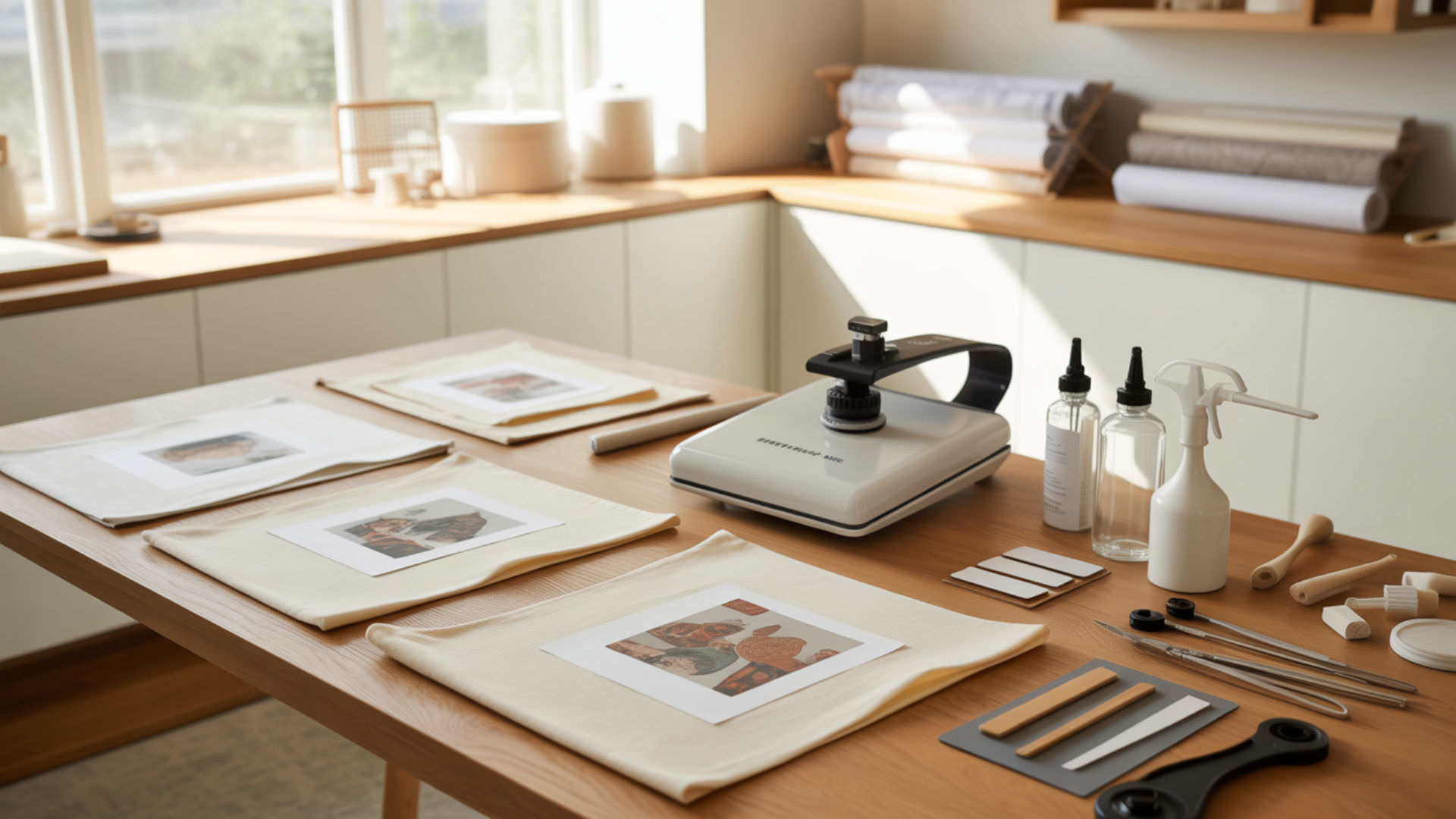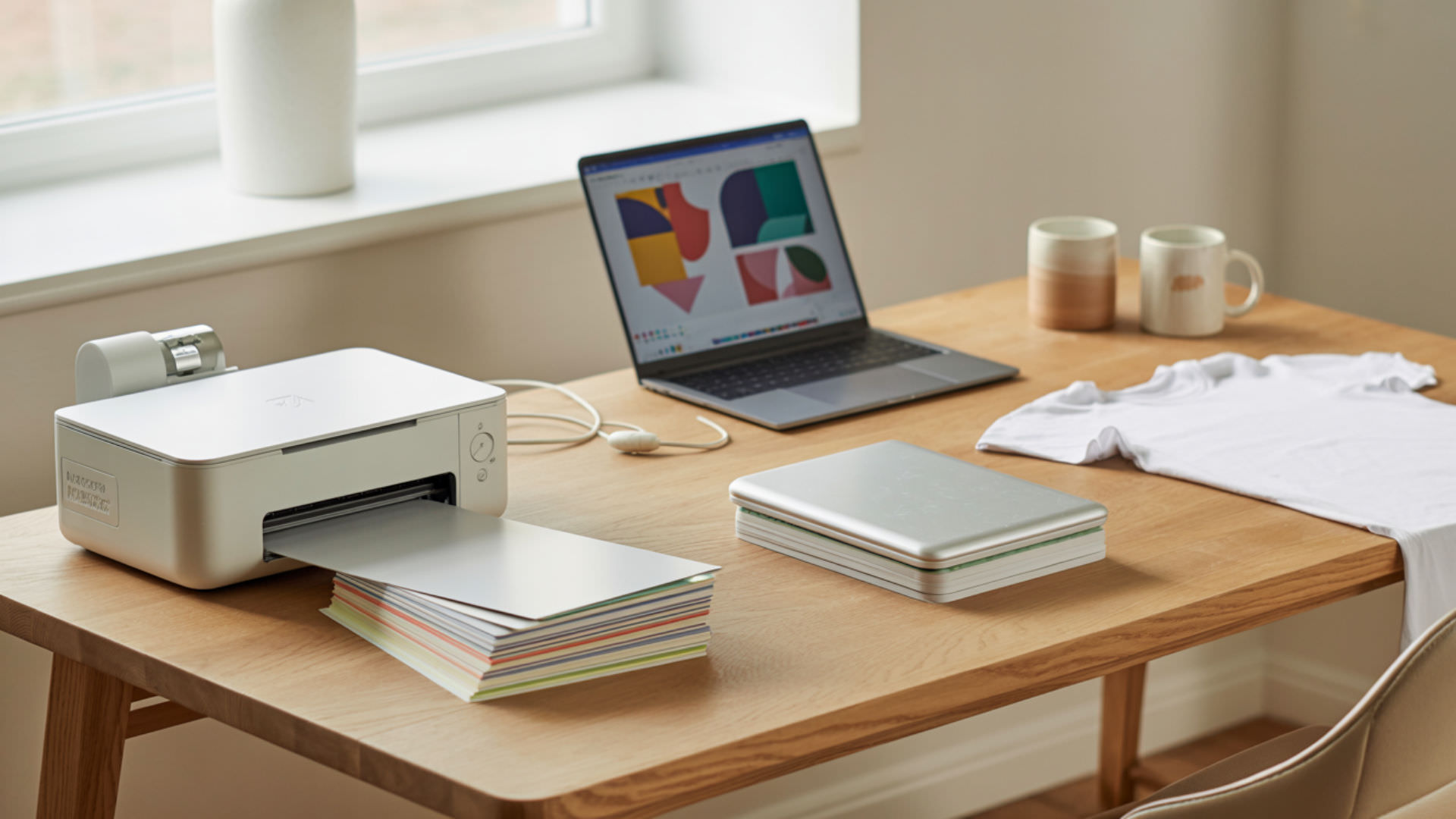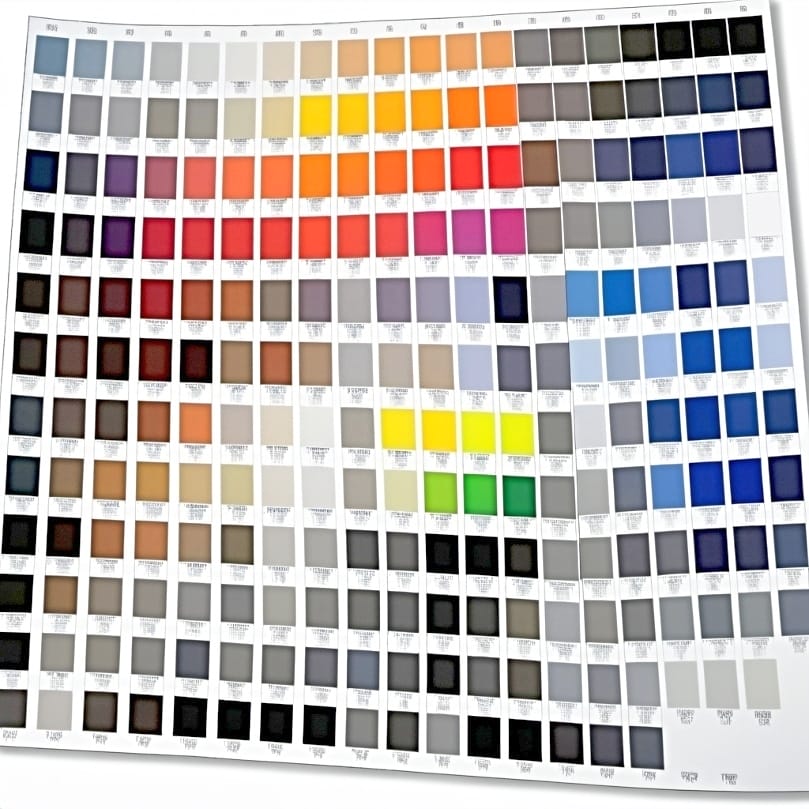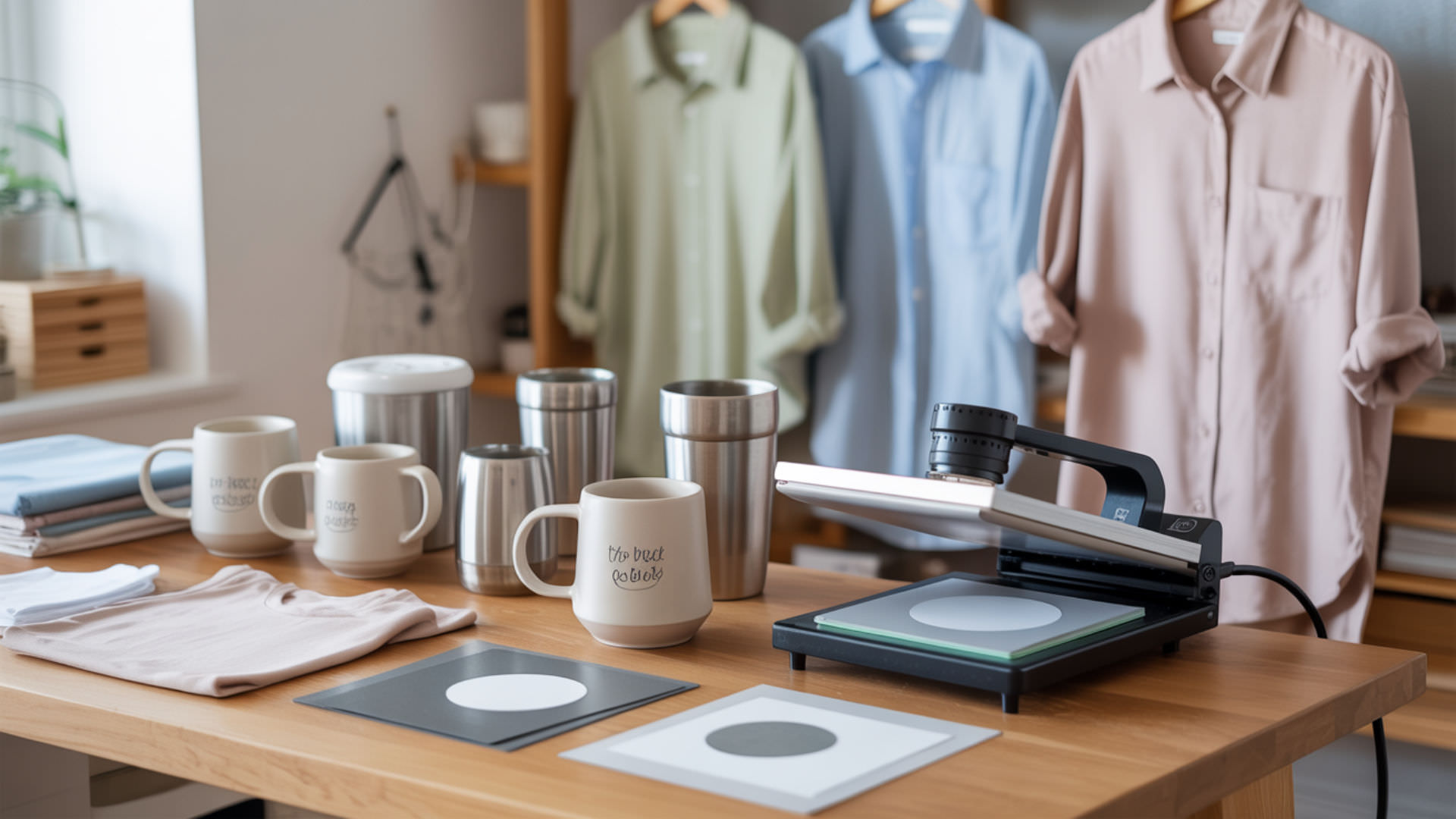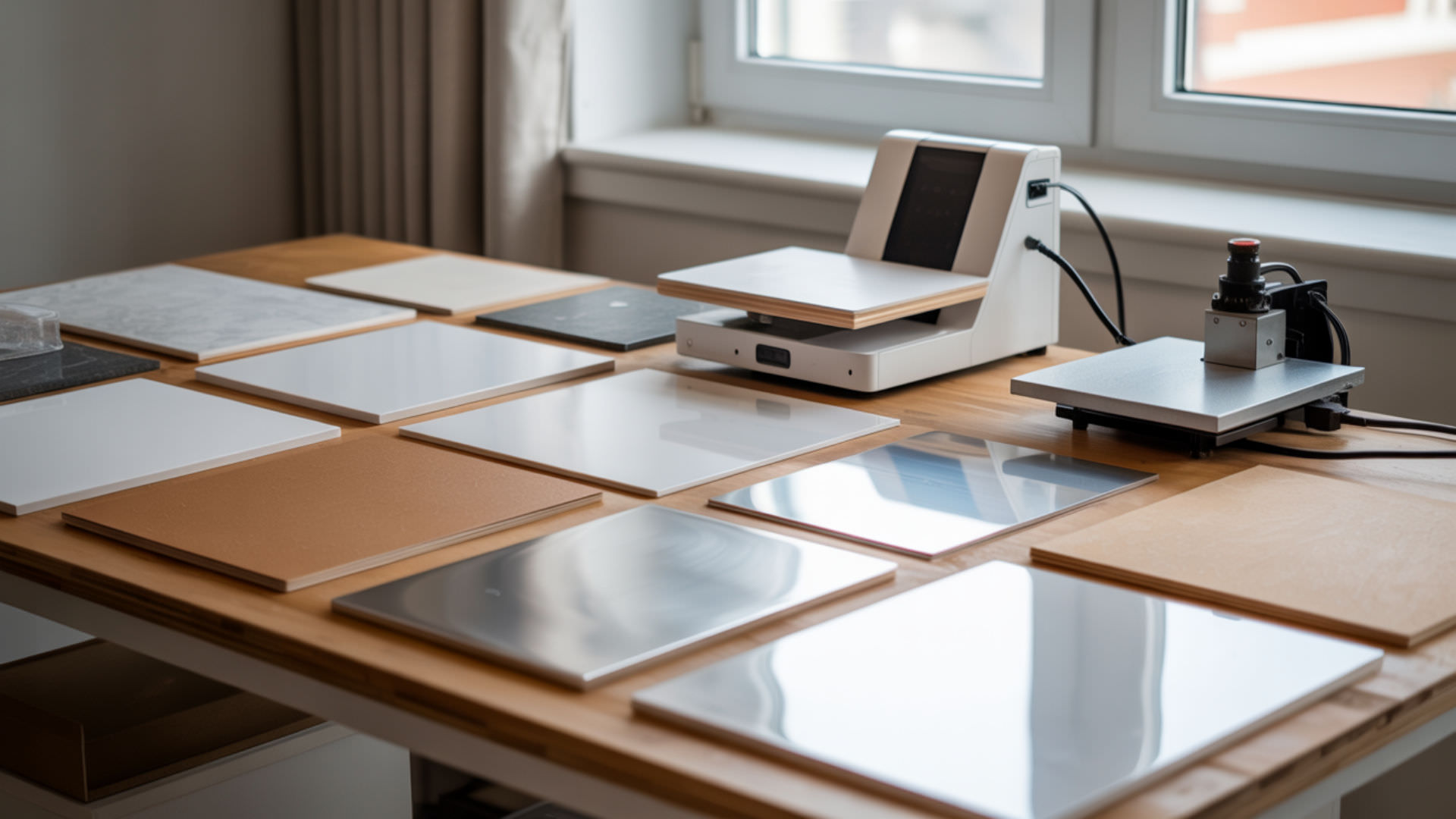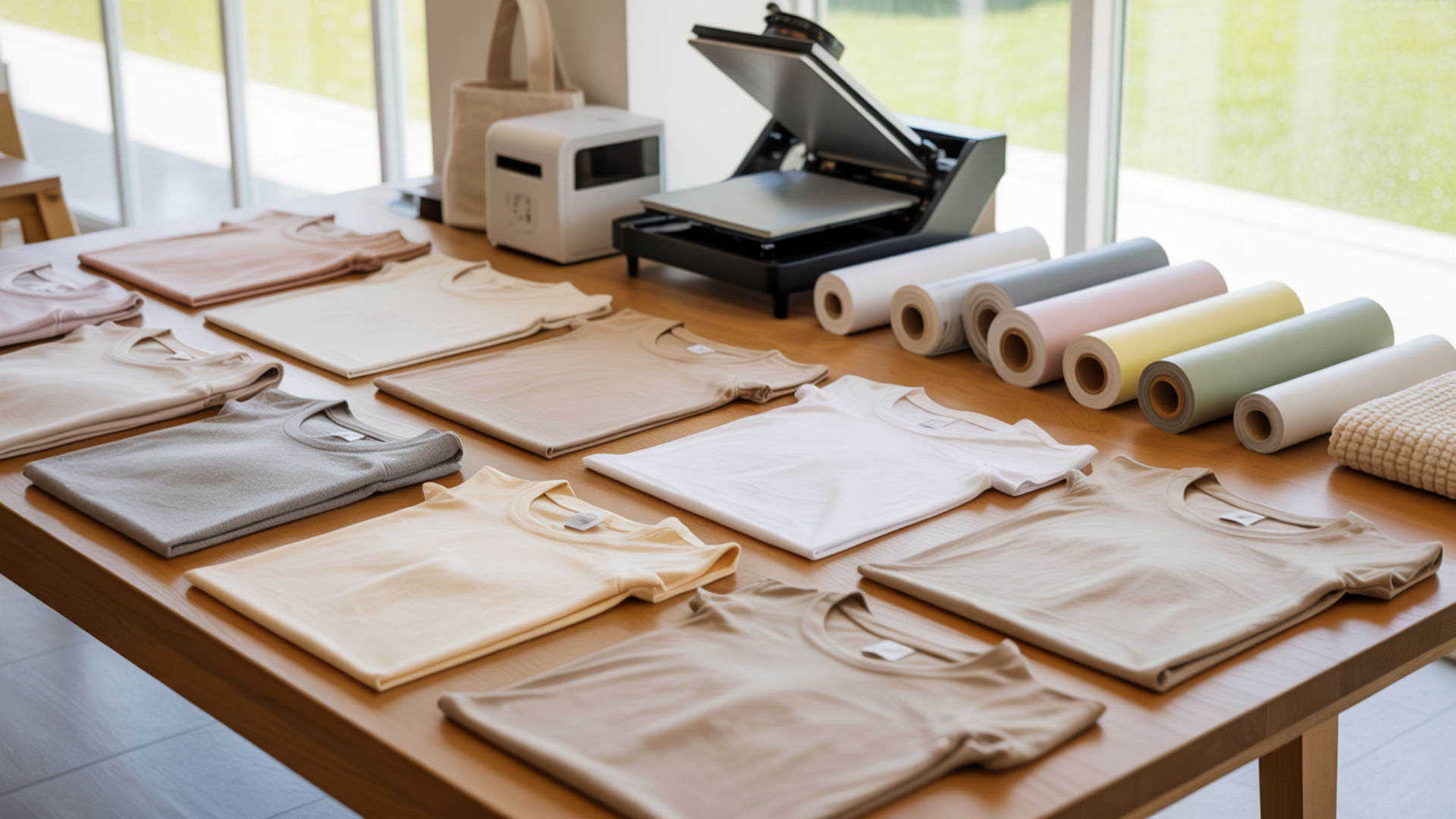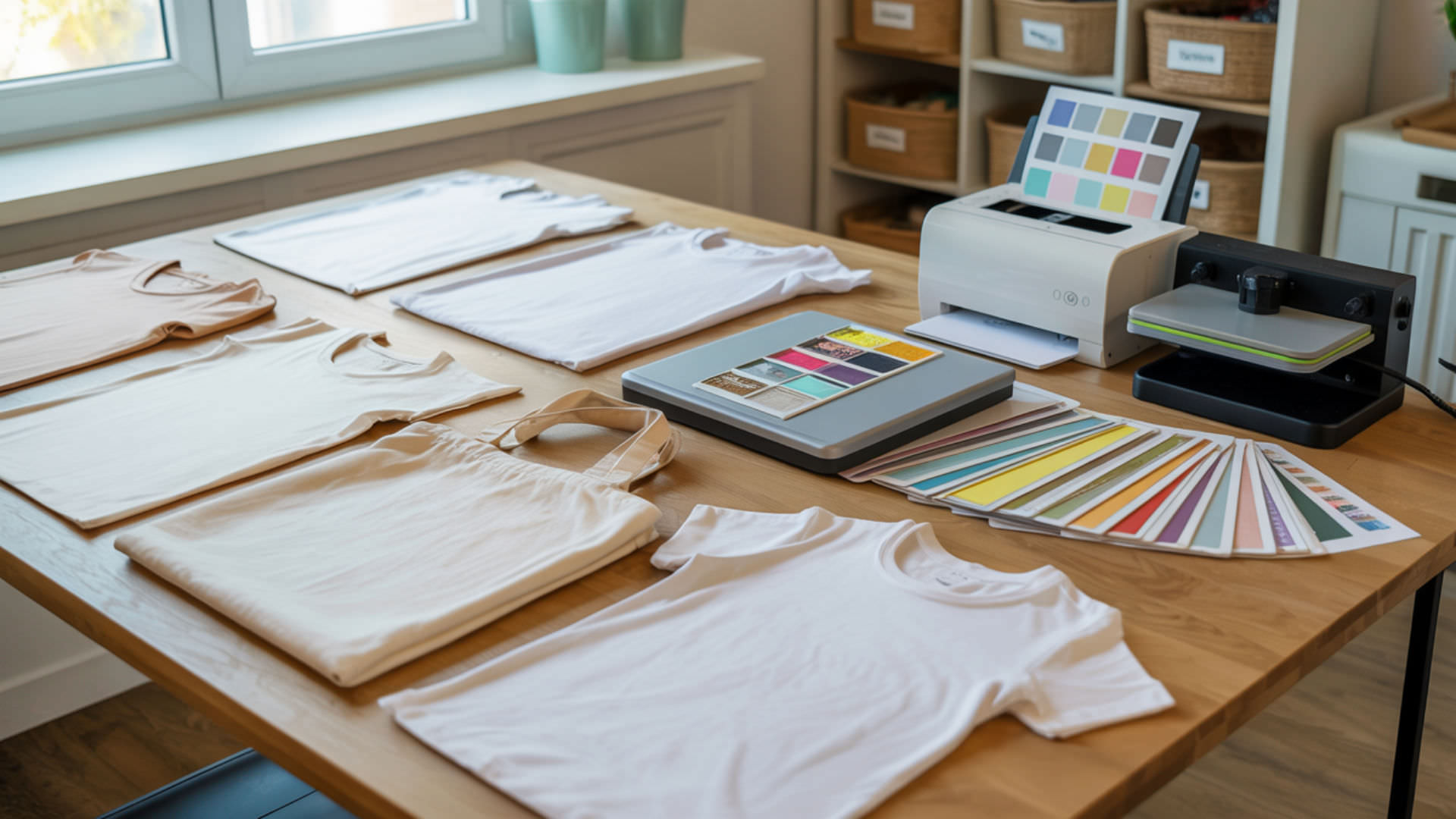Table of Contents
ToggleAdhesive spray for sublimation is a light-tack formulation designed to hold transfer paper in place during heat pressing. The adhesive prevents movement that causes ghosting or double images. Pressure-sensitive adhesive formulations activate under heat transfer conditions, providing a temporary bond that releases cleanly after pressing. Understanding heat transfer mechanics helps explain why adhesive spray stabilizes transfers, covered in our guide on how sublimation works.
Key Takeaways
- Adhesive spray stabilizes sublimation paper on substrates during pressing while polymer surfaces receive dye transfer.
- Heat-resistant formulations designed for sublimation withstand 400°F without burning, smoking, or leaving residue.
- Light application prevents ghosting; overuse blocks sublimation gases and causes uneven color transfer.
What Is Adhesive Spray for Sublimation?
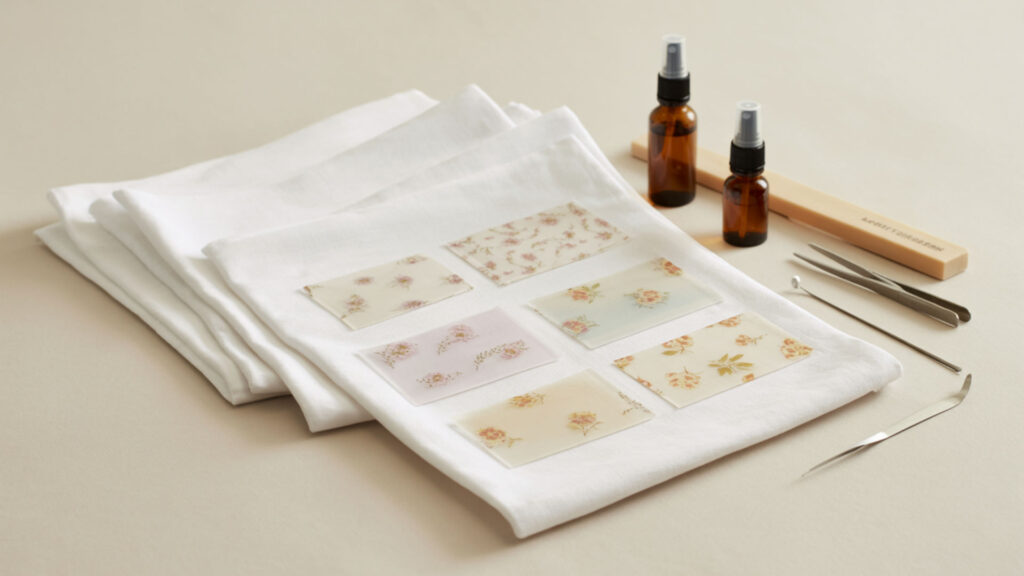
Adhesive spray for sublimation creates a temporary bond between transfer paper and substrate during the sublimation phase transition. When dye converts from solid to gas under heat, even slight paper movement creates ghosting artifacts. The adhesive holds everything stationary while gaseous dye expands and penetrates polymer surfaces. Sublimation adhesive sprays rely on pressure-sensitive adhesive chemistry, which provides temporary tack that holds materials in place without creating a permanent bond.[1]
Can You Use Adhesive Spray for Sublimation?
Yes, adhesive spray works well for sublimation when using heat-resistant formulations. The adhesive prevents ghosting by stabilizing transfer paper throughout the pressing cycle. Sublimation-specific sprays offer advantages over heat-resistant tape—no tape marks remain after pressing, making them ideal for visible edge areas.
Is Adhesive Spray Necessary for Sublimation?
Adhesive spray isn’t always necessary but is highly recommended for fabrics and flexible substrates. Certain materials require extra stability under heat transfer conditions—soft goods like t-shirts, mousepads, and tote bags shift easily under press pressure. Rigid substrates like ceramic tiles often stay positioned without additional adhesive.
When Should You Use Adhesive Spray During Sublimation?
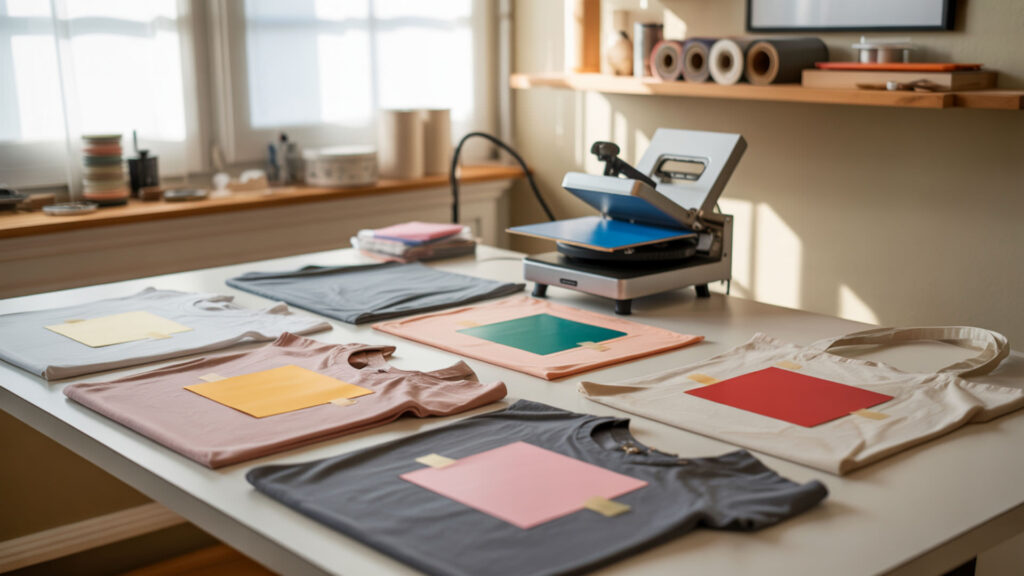
Use adhesive spray when sublimating on fabrics, soft surfaces, or any material prone to shifting under press pressure during heat transfer. Large designs particularly benefit from spray since tape alone cannot secure entire edges effectively. Heat exposure causes instability in various sublimation contexts; our guide explains how thermal degradation affects coatings during dishwasher use.
What Types of Adhesive Spray Can Be Used for Sublimation?
Heat-resistant pressure-sensitive adhesive formulations work best for sublimation. Brands like Thermo-Tack, Siser EasyTack, and Krylon Easy-Tack are specifically designed for high-temperature applications. These PSA products withstand sublimation temperatures (385–400°F) without degrading, burning, or leaving residue on finished products after pressing.
⫸ Click Here For Best Selling Sublimation Printers And Products ⫷Can Regular Spray Adhesive Be Used Safely for Sublimation?
Regular adhesive sprays should not be used for sublimation. Standard formulations may experience thermal degradation under heat press temperatures, causing burning, smoking, or permanent residue. Non-sublimation adhesives often melt or become permanently sticky rather than releasing cleanly. Always use adhesives rated for high-temperature heat transfer applications.
How Do You Apply Adhesive Spray for Sublimation Transfers?
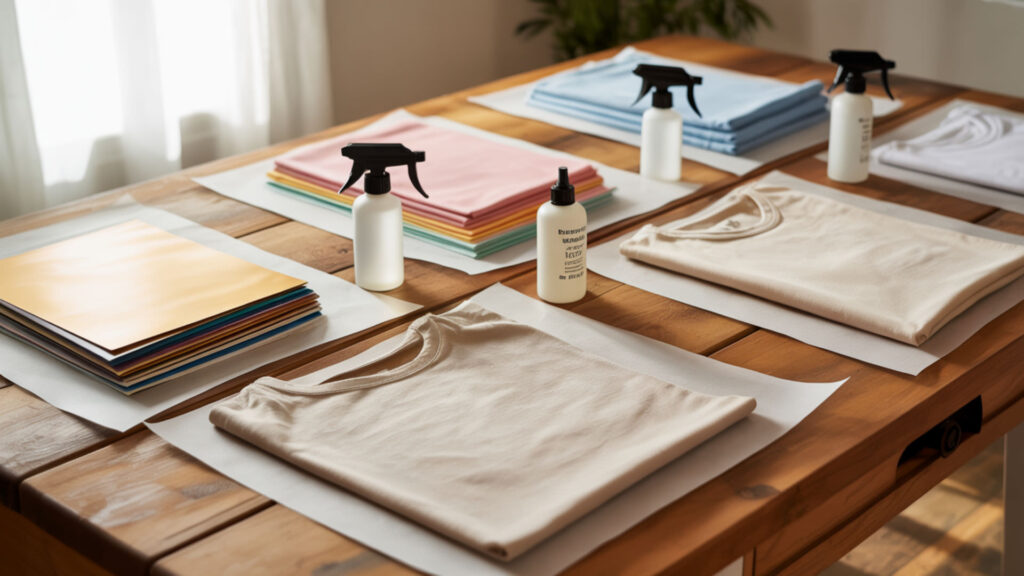
Apply adhesive spray by holding the can 10–12 inches away and lightly misting the back of sublimation paper. Even an adhesive layer prevents uneven heat transfer across the design surface. Work in ventilated areas to avoid inhaling fumes. Adhesive performance varies by substrate polymer content, which our polyester percentage guide explains. Working in a well-ventilated space helps reduce exposure to airborne particles and vapors when using spray adhesives. [2]
What Is Repositionable Spray Adhesive?
Repositionable spray adhesive uses pressure-sensitive adhesive chemistry that maintains temporary tack allowing adjustment before pressing. Products like 3M Repositionable 75 adhere in seconds yet permit lifting and repositioning of materials. The extended tack range lets you align transfers precisely before committing to final placement.
How Do You Use Repositionable Spray Adhesive?
Apply light adhesive coat to transfer paper back, wait 30–60 seconds for tack development, then position on substrate. Repositionable formulations allow peeling and realignment if placement needs adjustment. Smooth out wrinkles before pressing. Light application provides better hold under heat.
How Do You Use Adhesive Spray Step-by-Step?

- Work in well-ventilated area or spray booth to avoid inhaling adhesive fumes. Proper ventilation protects health and prevents overspray buildup.
- Hold can 10–12 inches from sublimation paper and spray back surface lightly. Correct distance creates even mist without heavy spots.
- Wait 30–60 seconds for adhesive to become tacky before positioning. Tack development ensures proper grip without excessive wetness.
- Position transfer paper face-down on substrate with design aligned correctly. Repositionable sprays allow adjustment if alignment needs correction.
- Smooth paper from center outward to eliminate air bubbles and wrinkles. Trapped air causes uneven heat transfer and ghosting artifacts.
- Press at standard sublimation settings (385–400°F, 45–60 seconds, medium pressure). Heat transfer activates adhesive stability during dye transfer.
- Remove transfer paper immediately after pressing while still hot. Hot peel prevents dye migration back to cooling paper.
- Wipe any visible residue with damp cloth or heat press cleaner if needed. Quality sprays leave minimal residue requiring cleanup.
Does Adhesive Spray Affect Sublimation Print Quality?
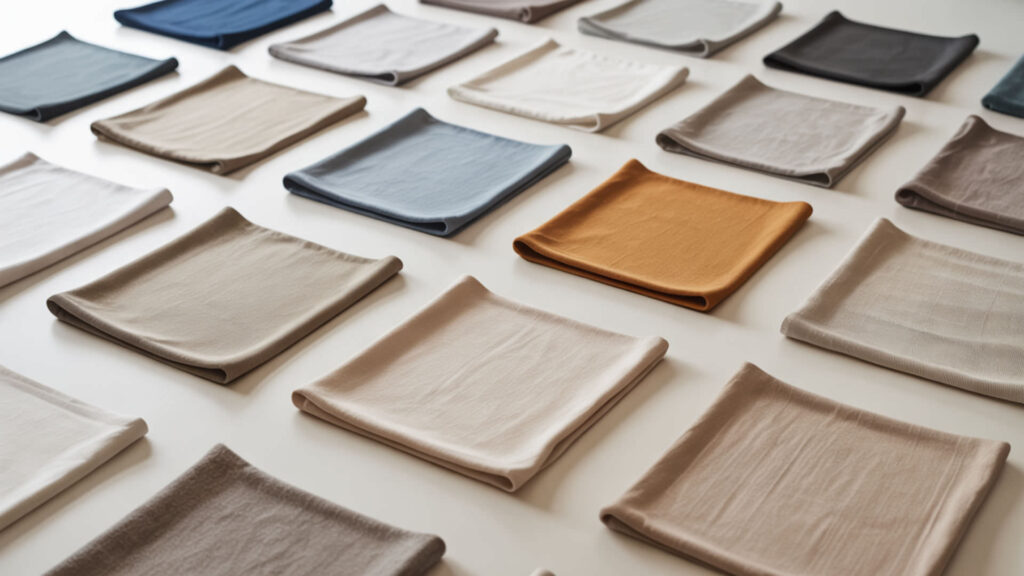
When used correctly, adhesive spray doesn’t negatively affect print quality. However, overuse can block sublimation gases or cause uneven color transfer across the design. Under high heat, excessive adhesive may experience thermal degradation leaving residue. Light, even application produces best results without quality compromise.
How Do You Remove Adhesive Spray Residue After Pressing?
Remove adhesive residue by gently wiping surfaces with damp cloth, heat press cleaner, or rubbing alcohol after pressing. Residue typically rises when adhesive is overheated or overapplied. Quality sublimation-specific sprays minimize residue issues when used according to manufacturer directions with light application.
Does Spray Adhesive Fully Come Off?
Quality sublimation adhesive sprays release cleanly after pressing without permanent residue. Residue behavior depends partly on polymer surface properties—some substrates release adhesive more easily than others. Repositionable formulas designed for sublimation typically leave no trace when applied lightly and pressed at correct temperatures.
What Are the Best Adhesive Spray Options for Sublimation?
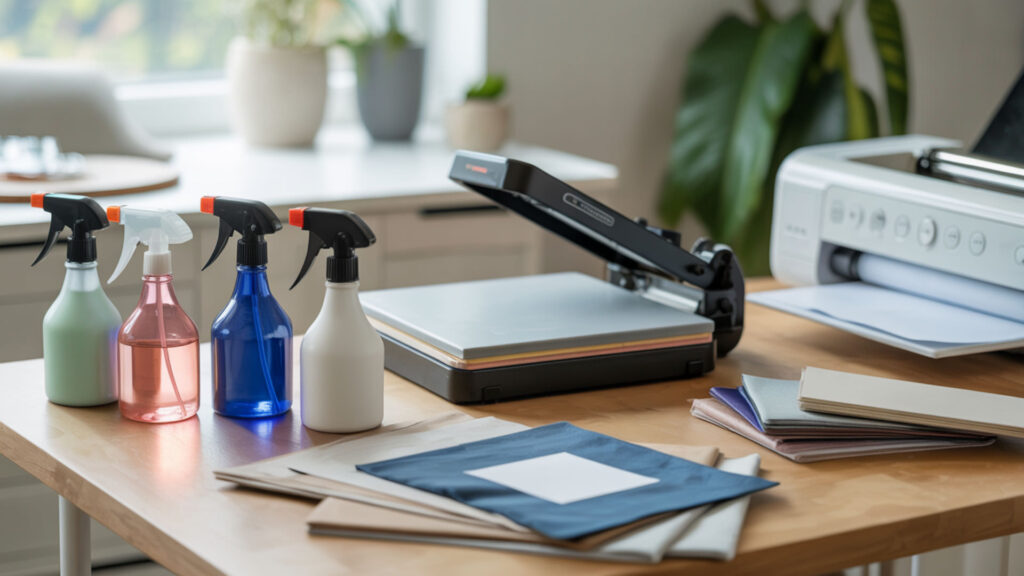
Best sublimation adhesive sprays use pressure-sensitive adhesive chemistry designed for high-heat performance without residue. Thermo-Tack, Siser EasyTack, Krylon Easy-Tack, and Sprayway 66 are popular options among sublimation crafters. Both adhesive spray and heat tape rely on pressure-sensitive adhesive chemistry for stabilizing transfers, covered in our heat tape selection guide.
What Spray Adhesive Remains Tacky Enough for Sublimation?
Aleene’s Repositionable Tacky Spray maintains tackiness throughout positioning and pressing without excessive stickiness. Its formula dries clear and repositionable while providing sufficient grip during heat transfer. Tacky adhesives offer better transfer stability than weak-tack alternatives that may release during pressing.
What Are Alternatives to Adhesive Spray for Sublimation?
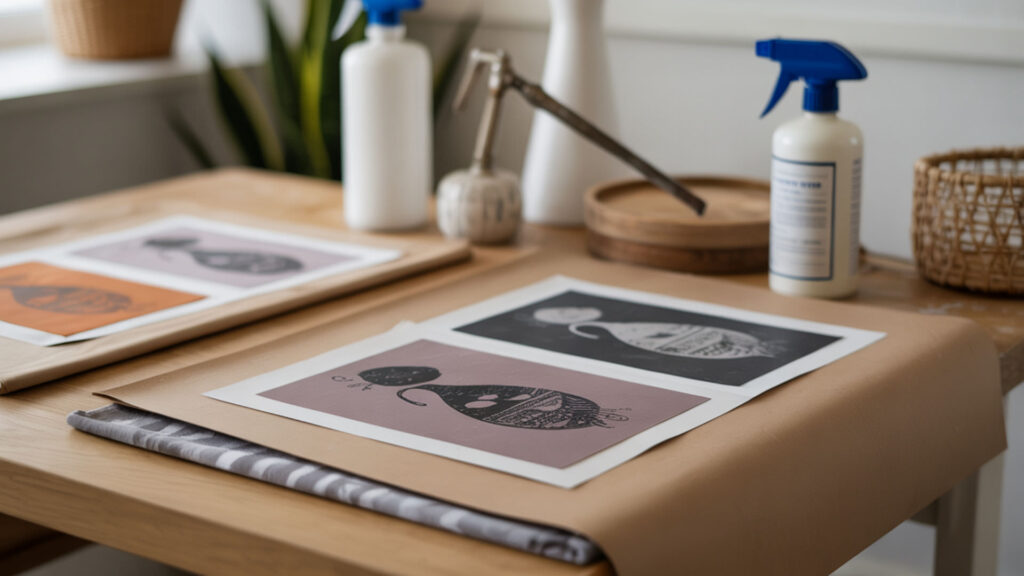
Alternatives to adhesive spray include heat-resistant tape, silicone pressing mats, and adhesive lint rollers for light hold. Pressure-sensitive adhesive tapes work well when polymer sensitivity matters or when spray overspray is problematic. Some crafters prefer tape for precision edge work and spray for large coverage areas.
What Is Sublimation Spray?
Sublimation spray differs from adhesive spray—it adds a polymer coating layer to non-polyester fabrics enabling sublimation on cotton. The spray creates a polymer-like surface for dye bonding where none exists naturally. Without this polymer layer, sublimation ink simply washes out of cotton lacking synthetic fiber content.
What Is Sublimation Spray Coating?
Sublimation spray coating is a clear polymer layer applied to convert non-sublimatable materials into compatible substrates. During the sublimation phase transition, gaseous dye requires polymer structure for absorption and bonding. The coating creates necessary polymer surfaces on items like cotton fabric, wood, or other materials lacking synthetic content.
Ready to Use Adhesive Spray for Perfect Sublimation?
Proper adhesive spray technique eliminates ghosting while maintaining clean, professional results. Choose heat-resistant formulations, apply lightly, and allow tack development before positioning transfers. Correct adhesive use combined with proper heat transfer settings produces crisp, aligned sublimation prints without residue or quality issues.
Frequently Asked Questions
Is adhesive spray safe for fabrics and heat presses?
Most sublimation adhesive sprays are safe for polyester fabrics and heat presses when formulated for high-temperature heat transfer applications. Quality products resist burning and smoking at sublimation temperatures without damaging equipment. Avoid regular craft sprays which may experience thermal degradation, potentially leaving residue on both press and substrates.
How long does adhesive spray take to dry?
Spray adhesive typically reaches the working tack within 30–60 seconds after application. Wait until adhesive feels tacky but not wet before positioning transfers. Environmental factors like humidity and temperature affect drying time. Full cure may take several hours, but sublimation only requires initial tack development.
Is adhesive spray permanent?
Sublimation adhesive sprays are designed for temporary, repositionable hold rather than permanent bonding. The adhesive releases cleanly after heat pressing, allowing paper removal without residue. Permanent spray adhesives exist but aren’t appropriate for sublimation transfers—you need temporary tack that releases after the heat transfer process completes.
Does spray adhesive wash out of clothes?
Quality sublimation adhesive sprays leave minimal residue that releases during pressing. Any remaining adhesive typically stops being sticky over time but may not fully wash out in cold water. Light application prevents excessive residue. If residue remains after pressing, rubbing alcohol helps remove it before washing.
How can you make adhesive spray at home?
DIY adhesive spray can be made by mixing equal parts white school glue and water in a spray bottle. However, homemade sprays aren’t heat-resistant for sublimation temperatures and may cause thermal degradation issues. For sublimation applications, commercial heat-resistant formulations provide safer, more reliable results without residue problems.
References
- Gum | Botany, exudate, types, uses, & facts | Britannica. (1998, July 20). Encyclopedia Britannica. https://www.britannica.com/technology/gum-adhesive
- About ventilation and respiratory viruses. (2025, May 14). Ventilation. https://www.cdc.gov/niosh/ventilation/about/index.html?utm_

